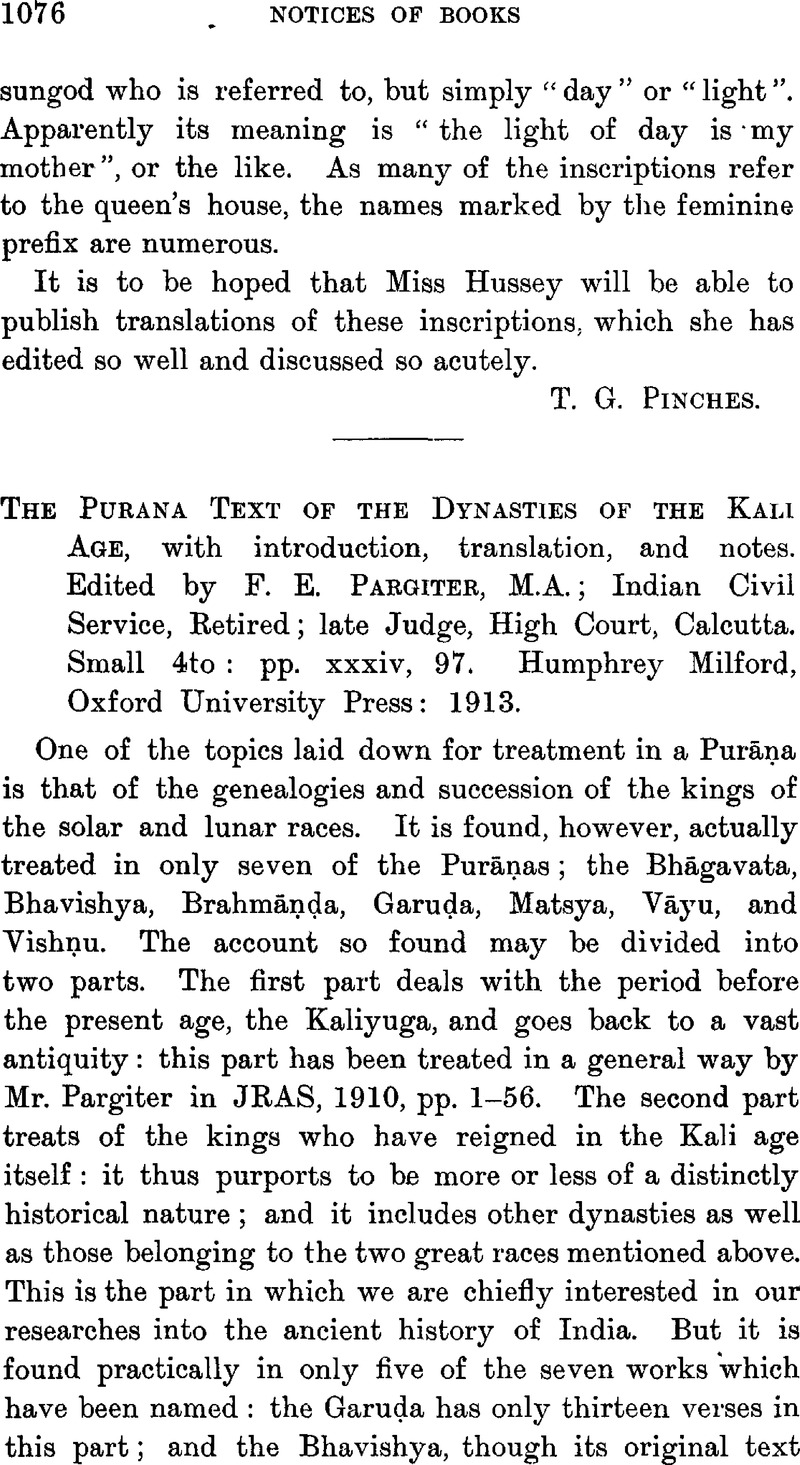No CrossRef data available.
Article contents
The Purana Text of the Dynasties of the Kali Age, with introduction, translation, and notes. Edited by F. E. Pargiter, M.A.; Indian Civil Service, Retired; late Judge, High Court, Calcutta. Small 4to: pp. xxxiv, 97. Humphrey Milford, Oxford University Press: 1913.
Published online by Cambridge University Press: 15 March 2011
Abstract

- Type
- Notices of Books
- Information
- Copyright
- Copyright © The Royal Asiatic Society 1913
References
page 1078 note 1 See Wilson, 's translation, vol. 4, pp. 161, 162.Google Scholar
page 1078 note 2 A footnote on p. 8 of the introduction tells us that they differ as to the Sūta's name. A Sūta was a charioteer, and, as serving a king, he had also to act as herald or bard: it was his duty to proclaim the heroic actions of the king and his ancestors while he drove his chariot to battle, as well as on state occasions, and he had therefore to know by heart portions of the epics and ancient ballads: see Monier-Williams' Sanskṛit Dictionary under sūta.
page 1080 note 1 See introd., p. 13, note 1.
page 1081 note 1 Text, p. 57; translation, p. 74. I have quoted this verse in connection with another matter in JRAS, 1910, p. 496.Google Scholar
page 1082 note 1 See the Vishṇu, , translation, vol. 4, p. 237Google Scholar; Bombay text of 1866, aṁśa 4, chap. 24, p. 44a, verse 45 ff.; compare the Bhāgavata, Bombay text of 1905, skandha 12, chap. 2, verses 37, 38. For Kalāpa see also the Vishṇu, , translation, vol. 3, p. 197Google Scholar (the commentary gives here the locality of the village), and p. 325.
page 1082 note 2 When I said, in a place referred to by MrPargiter, (introd., p. 15, note 2)Google Scholar, that this reckoning is traced back, as an astrological detail, to the sixth century, I was giving what had to be a very much condensed account of the reckoning, and my reference was to the treatment of it by Varāhamihira (died a.d. 587). He had it, as he tells us, from Vṛiddha-Garga, regarding whose date we know nothing definite, except that he must presumably have been earlier than Garga (about a.d. 400). As far as I can see at present, there is no objection to holding that the reckoning may have existed about a.d. 250. But it is another question whether this Purāṇic passage about it dates, like the rest of the text, from that time.
page 1083 note 1 Text, p. 59, lines 11, 12; translation, p. 75.
page 1083 note 2 At the bottom of Andhrāṇzāntē, instead of the correct Sanskrit Andhrāṇām = antē which did not suit the metre, we have Andhrāna antē, one of the instructive Prākṛit forms commented on by MrPargiter, (p. 79)Google Scholar. I base my reading tathā on the tvayā which is found in the Vāyu generally.




